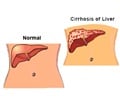
"The reasons for the uptick vary and may involve complex sociodemographic changes in the population, but the findings are clear: More people are consuming alcohol now than in the early 1990s," said Dr. Raul Caetano, dean of the UT Southwestern School of Health Professions and lead author of the paper available online and in the October issue of Alcoholism: Clinical & Experimental Research.
The findings, Dr. Caetano said, suggest that continuous monitoring of alcohol consumption levels is needed to understand better the factors that affect consumption. Monitoring also would help to detect as early as possible signs that rates of risky drinking behaviors such as binge drinking or drinking to intoxication may be increasing, said Dr. Caetano, who also is regional dean of the UT School of Public Health's campus in Dallas.
"Changes in the population due to aging, the influx of immigrant groups, and a decline in mean income level because of economic recessions can all impact trends in drinking and problems associated with drinking," he said.
While more Caucasians, Hispanics and African-Americans reported drinking between 1992 and 2002, only Caucasian women consumed more drinks per person. The number of drinks that African-Americans and Hispanics consumed leveled out over the 10-year time period.
In addition to an increase in the number of both male and female drinkers within all three ethnic groups, the researchers also found that among women, Caucasians were more likely than Hispanics or African-Americans to consume five or more drinks a day or drink to intoxication. An increase in drinking five or more drinks a day was also detected among the heavier drinkers in the population, suggesting a potential polarization of drinking practices.
Advertisement
For the study, the researchers culled data from the 1991-92 National Longitudinal Alcohol Epidemiologic Survey and the 2001-02 National Epidemiologic Study on Alcohol and Related Conditions. The National Institute on Alcohol Abuse and Alcoholism conducted both surveys, in which trained interviewers spoke with individuals 18 or older in the respondents' homes. The interviewers used a standardized questionnaire, so both surveys used the same overall methodology. Each study included about 43,000 participants.
Advertisement
While many uncontrolled variables could skew the results, Dr. Caetano said the overall trend is clear – the proportion of men and women who drink alcohol has risen in all three ethnic groups.
"This suggests to us that a variety of public-health policies such as restrictions on alcohol advertising, regulating high-alcohol-content beverages, increasing taxes on alcohol, as well as treatment and brief interventions may be needed to reduce alcohol-related problems," he said.
Researchers from the University of North Texas Health Science Center in Fort Worth also contributed to the study.
The study was supported by the National Institute on Alcohol Abuse and Alcoholism.
Source-Eurekalert













